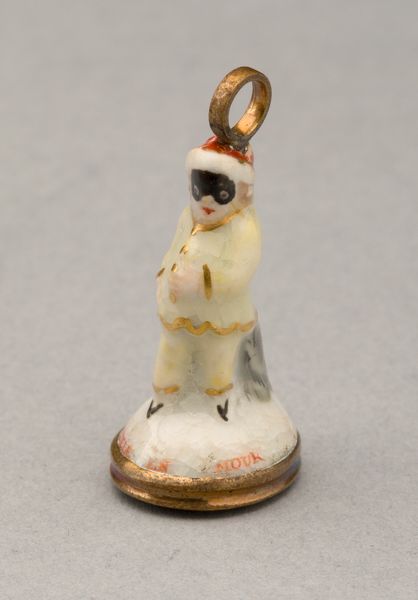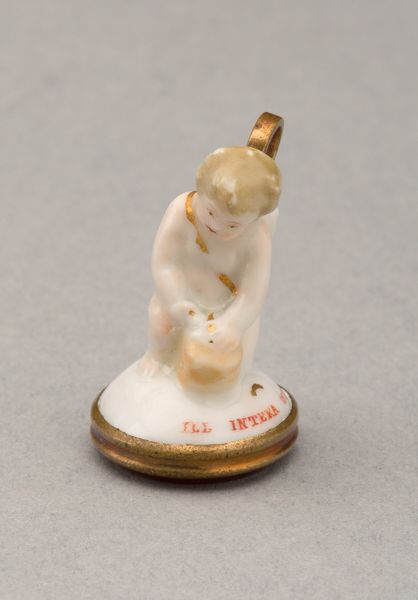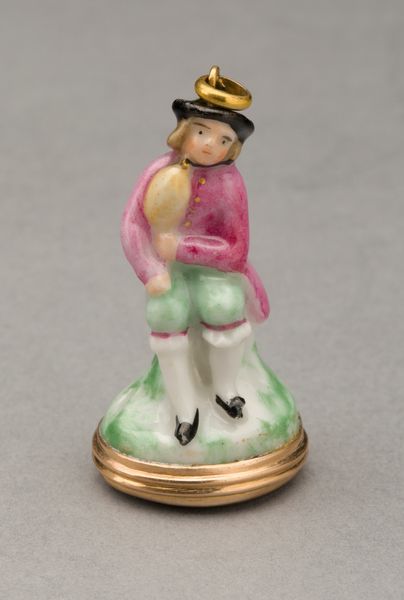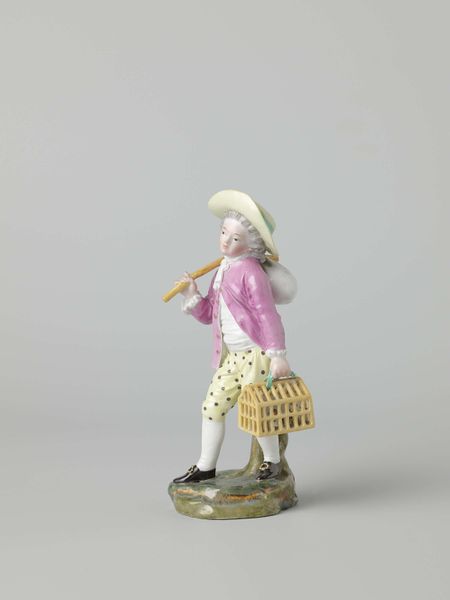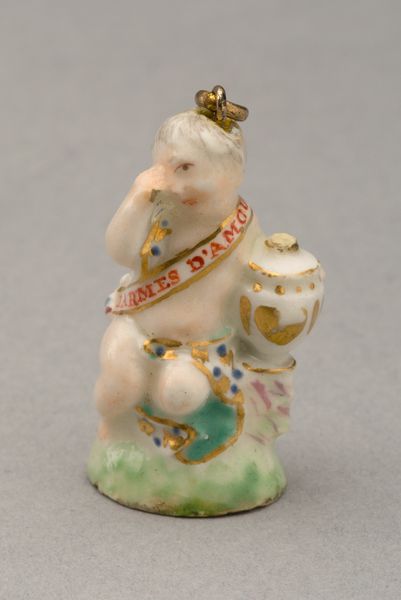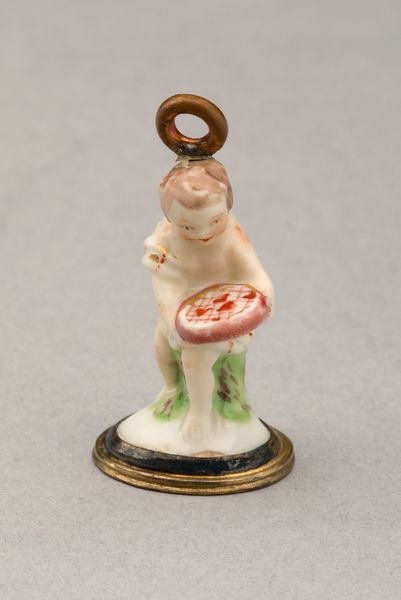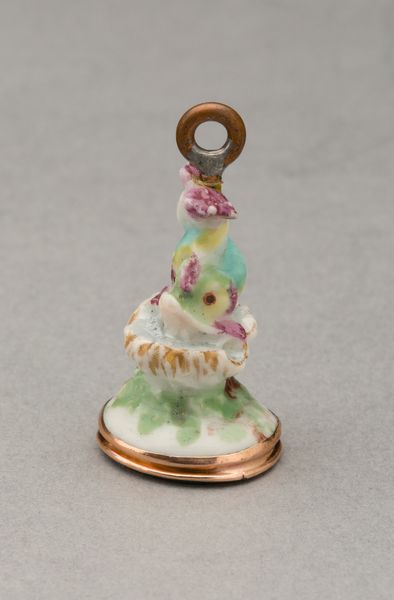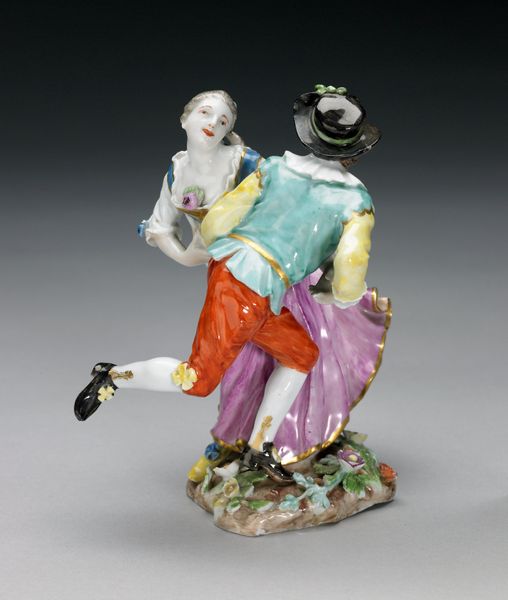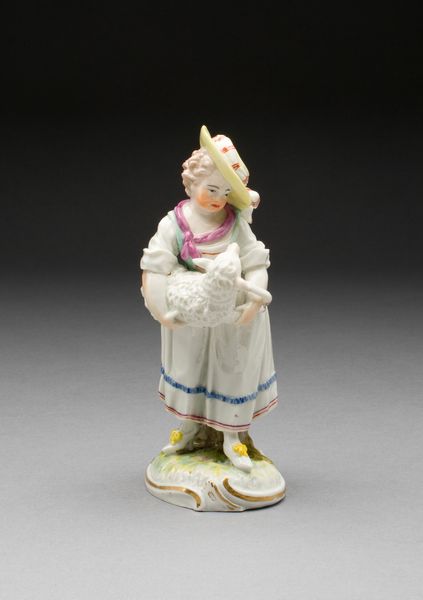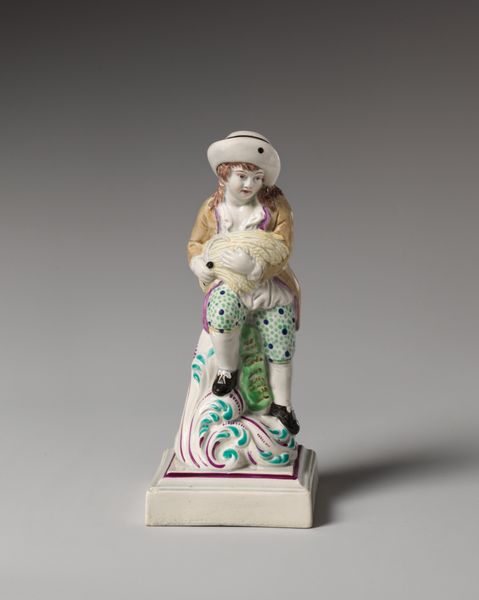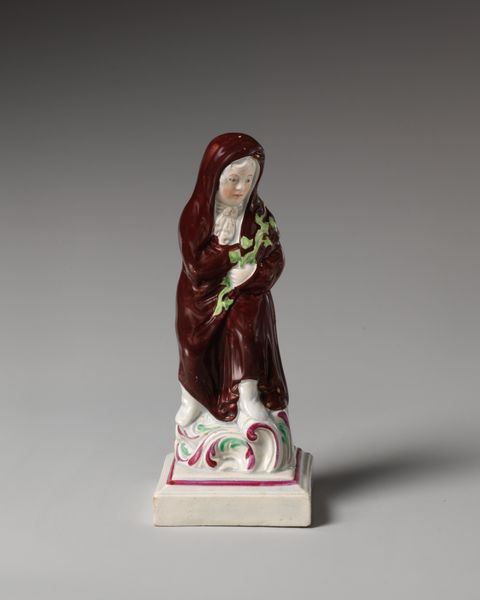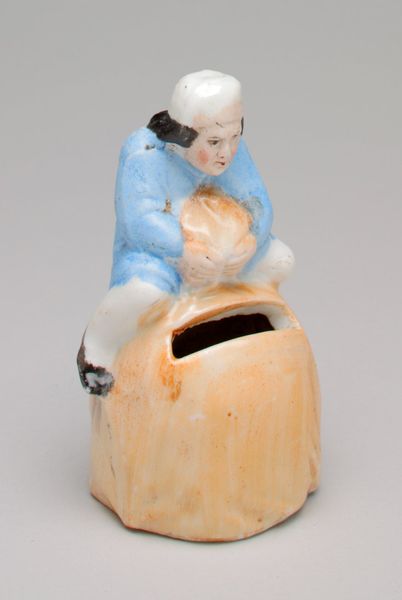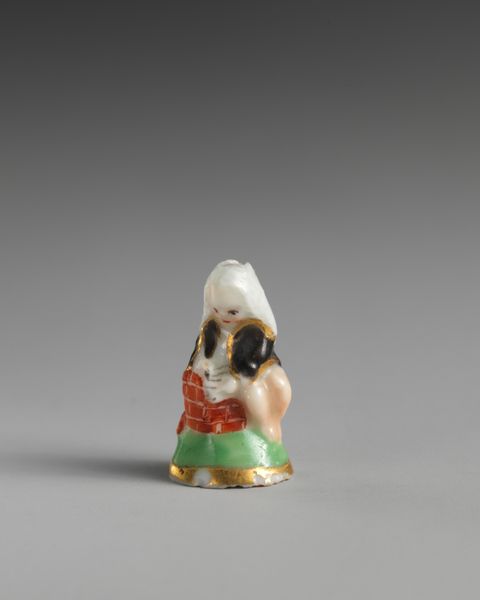
ceramic, porcelain
#
portrait
#
ceramic
#
porcelain
#
figuration
#
folk-art
#
genre-painting
#
decorative-art
#
miniature
#
rococo
Dimensions: H. .625 cm (5/8 in.)
Copyright: Public Domain
Curator: Looking at this miniature figural seal, made between 1750 and 1770, one is immediately struck by its delicate charm. It resides here at the Art Institute of Chicago. What's your initial take? Editor: There’s an interesting tactile quality despite it only being an image; you can sense the smoothness of the porcelain and imagine how tiny this seal must actually be. Curator: Exactly! Its size makes it remarkable; the level of detail for such a small object speaks volumes about the skill involved. Such objects in the Rococo period served a purpose, sealing letters or documents. The visual politics were at play; status being visibly sealed through such artifacts. Editor: I’m really drawn to the way the ceramic has been painted. You can see brushstrokes that gives some dimension, rather than just flat, decorative color. What's more, these miniatures would have been highly precious, demanding expert labour to manufacture and then careful consumption, thus also reflecting social values of the era. Curator: Absolutely, labor shapes every item. We see not only the hand of the artist, but of an era obsessed with miniaturization as a means of exhibiting taste and discernment. It reflects on display culture of the time; everything shrunk and preserved to capture an age. Note the figure himself is frozen in mid-action – an idealized, somewhat generic version of rustic labor. The ideal subject for the gentry’s personal objects, perhaps? Editor: It's interesting how the materiality is elevated by its presentation—it is both craft and art at the same time. It makes me think of the alchemical fascination with porcelain in that era; it wasn’t just about utility, but the almost magical transformation of materials that made it precious. Curator: Indeed, and the social framework that imbued it with meaning. Thinking about how the figure relates to his function as part of this sealing apparatus connects its own representation of work with social performances. I find the piece revealing about Rococo society itself. Editor: Agreed; seeing the actual labour embedded in production underscores the point that art objects always stand on someone's labor and the social relations, visible or otherwise, through the process of its own manufacture. Curator: Well, thinking through the intricacies behind this tiny world is just another sign of art's vast capacity for reflection! Editor: Absolutely. A reminder to consider production and context even when encountering art’s smaller-scale expressions.
Comments
No comments
Be the first to comment and join the conversation on the ultimate creative platform.
